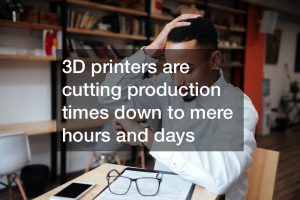How 3D Printing and Scanning Aids in Product Design and Production

If you have a product in mind and want to design it, you might think about using a product design firm to create the initial design. However, there are many tools and courses available that can help you to design the product yourself. If your design thinking is about product development, you also have a lot of other skills to learn before you can launch your product. If you don’t know how to do product design, your first step can be to take a course on it. There are free product design courses that you can take to help create your design. These courses will teach you how to design your own product so that you always have complete control over what it looks like and how it functions. When you know how to do product design, you don’t have to stop at just one product, either. You can use your skills to create as many products as you can dream up. This can ultimately save you a lot of money over time, and it allows you to make changes at every stage of the design process. It can also be a fun way to stay involved with your product.

With so many people bringing their inventions to the public on shows like Shark Tank or Dragons Den many viewers may be wondering how to do product design as the contestants do. If you have a product idea and have drawn up or written some of a product description, then you have probably figured out the first steps of how to design your own product. Many inventors may work with a product development company to help build a model of their product. These businesses exist to help get new products on the market, they can provide classes for small-time inventors on how to design their own product or introduce small start-ups to technology that can help with the process. Larger companies may hire a product design business to help with every part of the process. A product development company will have teams to help come up with a product design strategy. These teams will often specialize in different parts of product design and will have expertise in all product design factors. By hiring a product design business to help you bring your idea to market you will be set up for success.
Design and production are two crucial phases that businesses must focus on when creating a product. Recent advances in three-dimensional technology applications are changing both design and production in exciting and innovative ways. Here are some reasons why 3D printing and 3D scanning technology combine to create what is arguably the most dramatic change the business world has seen since the internet.

Design
Function and aesthetic are the two main factors that determine the design of a product. Modern product design typically relies on digital editing software to build a product from the ground up — this, in turn, would be sent for manufacturing as the prototype is built over a process that could take weeks or months traditionally. 3D scanning allows a physical object to be mapped and uploaded into the software, allowing inspired designers to have an accurate digital version of the object that can be manipulated. Since resolution size corresponds to a pixel size of .16 mm, and since pixel size is directly related to spatial resolution, designers can save hours while achieving an accurate digital image as a resolution of over 2.88 line pairs per millimeter was painstakingly achieved to maintain design accuracy.

Production 
The prototype sells a product and gives businesses the first idea of how functional, elegant, and desirable a product could be. Rather than waiting weeks or months, however, 3D printers are cutting production times down to mere hours and days. Once the designer has settled on a prototype all of the elements that would once have to be produced can be printed in-house, significantly cutting down on the waiting period and allowing designers to have direct control over every detail of the product. Additionally, 3D inspection software, provided by industrial CT scanning services and similar fields, allows businesses and customers alike to reduce the inspection cost and failure analyst costs of their products by 25-75%. As 3D scanning and printing technology continues to develop, more and more businesses and regular people are looking forward to designing and printing their own creations in a fraction of the time it would have once taken.